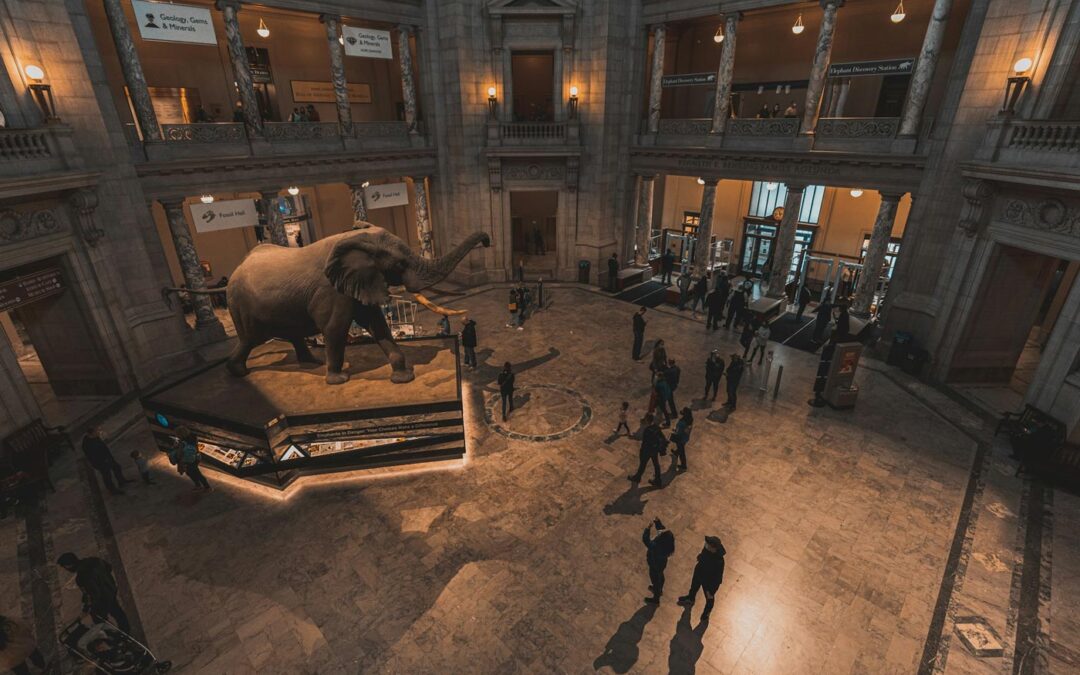The world’s largest collection of fossils is housed at the Smithsonian National Museum of Natural History in Washington, D.C., USA. This esteemed institution is renowned for its extensive and diverse collections of paleontological specimens, providing invaluable insights into Earth’s history and the evolution of life. Here’s an overview of this remarkable fossil collection:
Smithsonian National Museum of Natural History
Collection Highlights:
- Size and Scope: The museum’s fossil collection consists of over 40 million specimens, ranging from tiny microfossils to massive dinosaur skeletons. This makes it one of the most comprehensive fossil collections in the world.
- Diversity: The collection includes specimens from every major group of organisms, spanning various geological periods, with notable holdings in vertebrate and invertebrate paleontology as well as paleobotany.
Notable Exhibits:
- Dinosaur Hall: Featuring impressive dinosaur fossils, including a Triceratops and a Tyrannosaurus rex, the hall provides visitors with a glimpse into the world of dinosaurs during the Mesozoic Era.
- Fossil Marine Life: The collection also boasts an extensive range of marine fossils, illustrating the rich diversity of ancient ocean life.
- Ancient Mammals: Exhibits of ancient mammals detail their evolution and adaptation over millennia.
Research and Education:
- Scientific Research: The fossils are not just for public display; they are critical for scientific research. Paleontologists and researchers from around the globe study these specimens to advance knowledge in fields such as evolutionary biology, ecology, and climate science.
- Public Education: The museum provides educational programs, workshops, and interactive exhibits to engage visitors of all ages with paleontology and the history of life on Earth.
International Collaboration:
- Global Significance: The Smithsonian collaborates with institutions and researchers worldwide, sharing knowledge and findings that contribute to a deeper understanding of paleontological history.
- Conservation and Curation: The museum prioritizes the preservation and curation of its collections, ensuring that they remain a critical resource for future generations.
Visiting Tips:
- Exhibit Access: Visitors can explore a variety of permanent and rotating exhibits related to fossils and natural history.
- Educational Programs: Check the museum’s schedule for public lectures, guided tours, and family-friendly activities that enhance the visiting experience.
Fun Facts:
- Established Legacy: The museum’s fossil collection has been developed and curated over more than a century, reflecting the history and depth of paleontological research.
- Dynamic Displays: The museum continually updates and expands its exhibits, incorporating the latest scientific discoveries and interactive technologies.
The Smithsonian National Museum of Natural History’s fossil collection serves as a beacon of scientific inquiry and public education, offering an unparalleled window into the ancient past and the history of life on Earth. Whether you’re an aspiring paleontologist or a curious visitor, exploring this extensive collection is a journey through billions of years of natural history.
If you love dino bones, add the Royal Tyrell Museum in Alberta, Canada to your bucket list, and while there, stop by the World’s Largest Dinosaur Statue!

